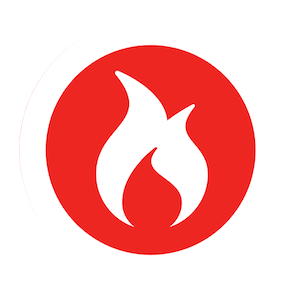We’ve revamped the way we conduct interviews over the past 18 months, with great success. Previously, the company had trouble with hiring, with a few bad apples getting through the process, and being slow to repair the problem. My leadership peers and I instituted new processes to try to work around these problems, be consistent, and quickly identify candidates that did not fit within our culture. Of course, the first step is identifying the culture that you want to create.
Most important thing
I’ve interview hundreds of candidates throughout my career, read thousands of resumes, asked thousands of technical and cultural questions during interviews. All of that, combined with what I’ve learned in the past 18 months, through this exercise, boils down to a few simple thoughts.
- Emotional intelligence is the most important thing for which to interview
- technical and other skills can be taught
Sometimes, you just need someone who can code, but for the most part, you will be better served by someone who has the emotional fortitude to work through issues.
Culture
Put technical leadership into a room and define the top five or ten things to describe the culture that you are trying to build.
- Agility
- Blameless
- Collaborative
- Supportive
- Freedom
- Responsibility
- Learning
- Sharing - internal and external
These become guiding principles in your company and can be used to define the qualities that you are looking for in candidates. Many companies have already defined these principles, using them to create the mission statement of the organization. Either way, you can use this exercise to get everyone on the same page.
Process
You must craft the interview process of your company ahead of time. We’re all busy, we don’t have enough time to come up with the questions off the cuff. It’s easy to get distracted or off on tangents during the interview process. Determine a set of questions for each of the different areas of expertise for which you interview. At a minimum, do this for the culture part of the interview.
Make sure that you can correlate all of these questions to the expertise for which you’re looking — technical skills, toolchain, development lifecycle — and to the cultural principles you defined in the prior step. The combination of technical and cultural match, will tell you how well the candidate will “fit” into your company.
Lean Interview
Create a simple Kanban style board, containing the default three columns: to-do, doing, done. Add the questions — optionally using different colors for the different types or areas of questions — as cards on the Kanban board. When conducting the interview, time each question and answer — normally we give 3 or 5 minutes for each question and answer.
I came up with this idea — using Lean Coffee as a model — to solve a few specific problems that you’ll see in the interview process at most companies.
- no defined structure
- no cohesive design between interviewers
- no apples-to-apples comparison between candidates
defined structure
This means questions are asked randomly, with no controls on time or topic. Engineers often drift on tangents while discussing technologies, background, companies, or life, in general. By defining the structure — lean interview — and timing the questions and answers, we’ve solved this problem. The looming timer/clock also forces them to stay on topic and be succinct.
cohesive design between interviewers
With the defined structure and predetermined questions, all of which are tied to tehcnical and cultural aspects of needs and company values, the interviewers are presenting a common thread to the candidate. The structure is the same, the principals that they are hiring for are the same.
apples-to-apples comparion between candidates
The same set of predetermined questions will be asked of each candidate, which means each interviewer has the same information for each candidate.
more
We based all of our questions on behavioral interviewing practices, asking questions that expect stories as answers, and having two interviewers per interview slot, per candidate.
We also spent a good deal of time training the interviewers about conscious and unconscious bias, diversity, and how to avoid discrimination while interviewing.
Conclusion
All of this has come together to create a wonderful culture. Since we started working on this, we haven’t had any “bad hires,” it has rebuilt the energy in an office that was struggling before.
It’s difficult. It takes a lot of time. At one point, we were conducting 4 or 5 interviews per week, each of which would consume 4 hours of the day. It pulls people away from work, it will hurt your throughput on your projects.
However, if you’re going to spend time on something other than getting projects done and building features, isn’t it best to make sure that the new people joining your team are the right people?
